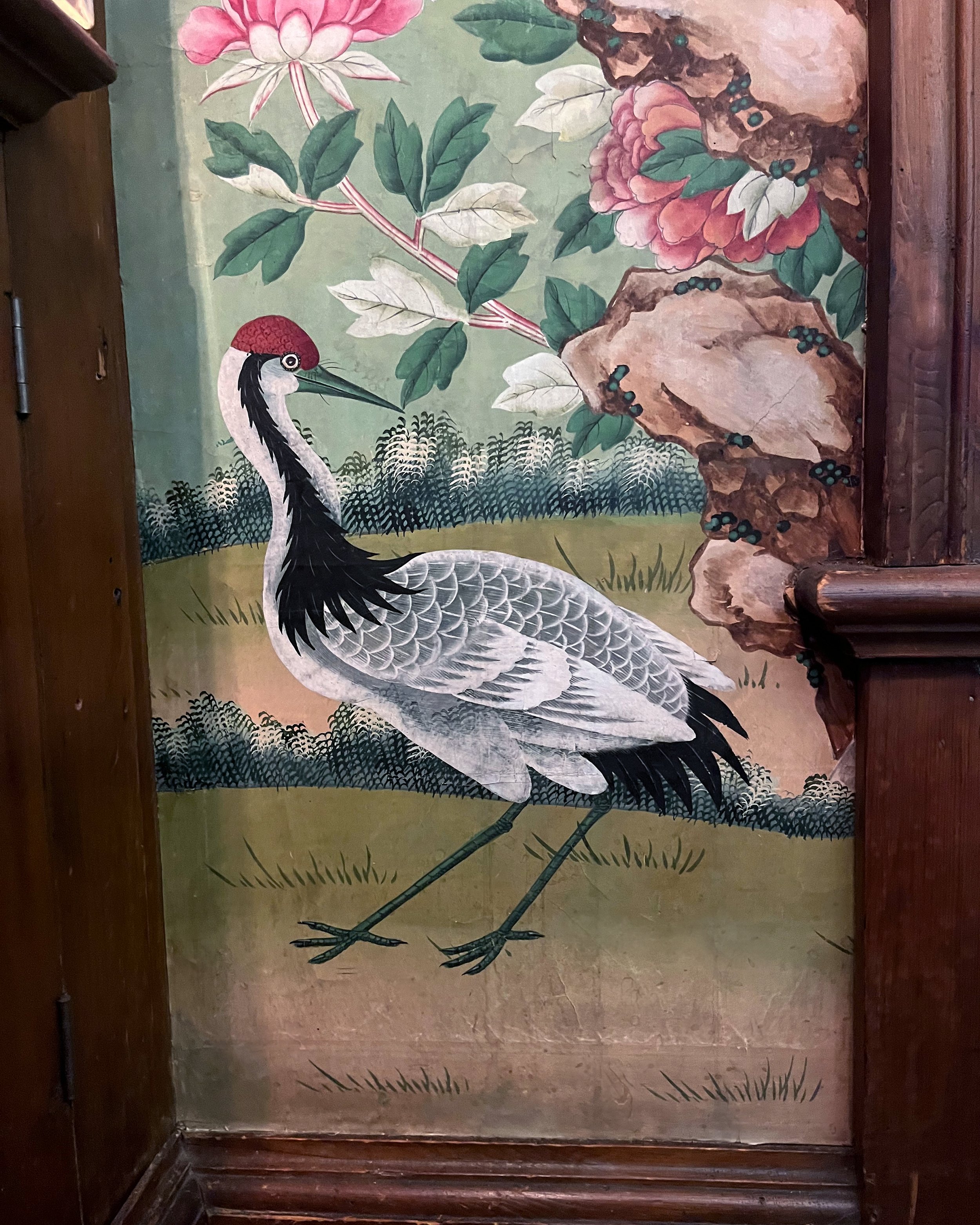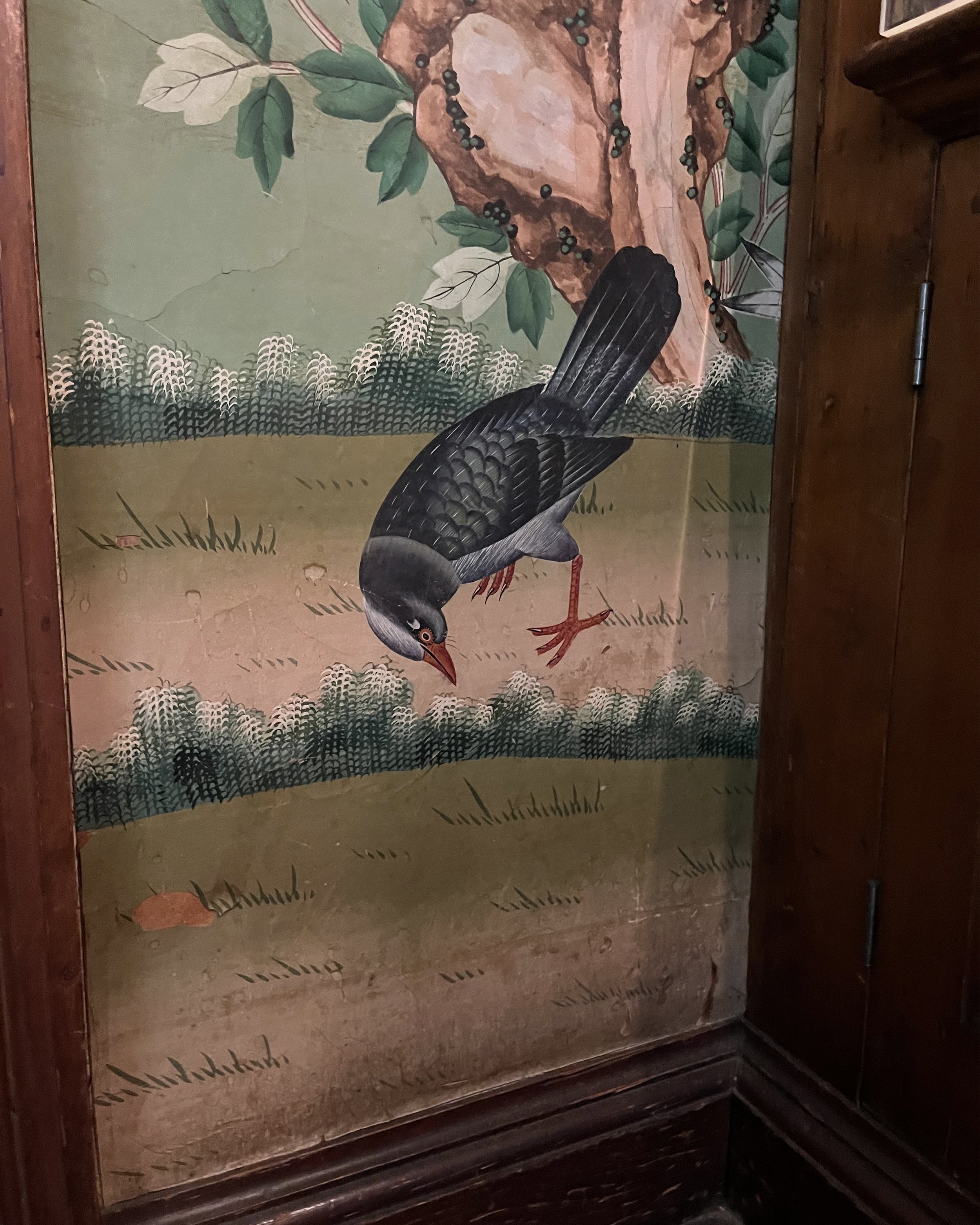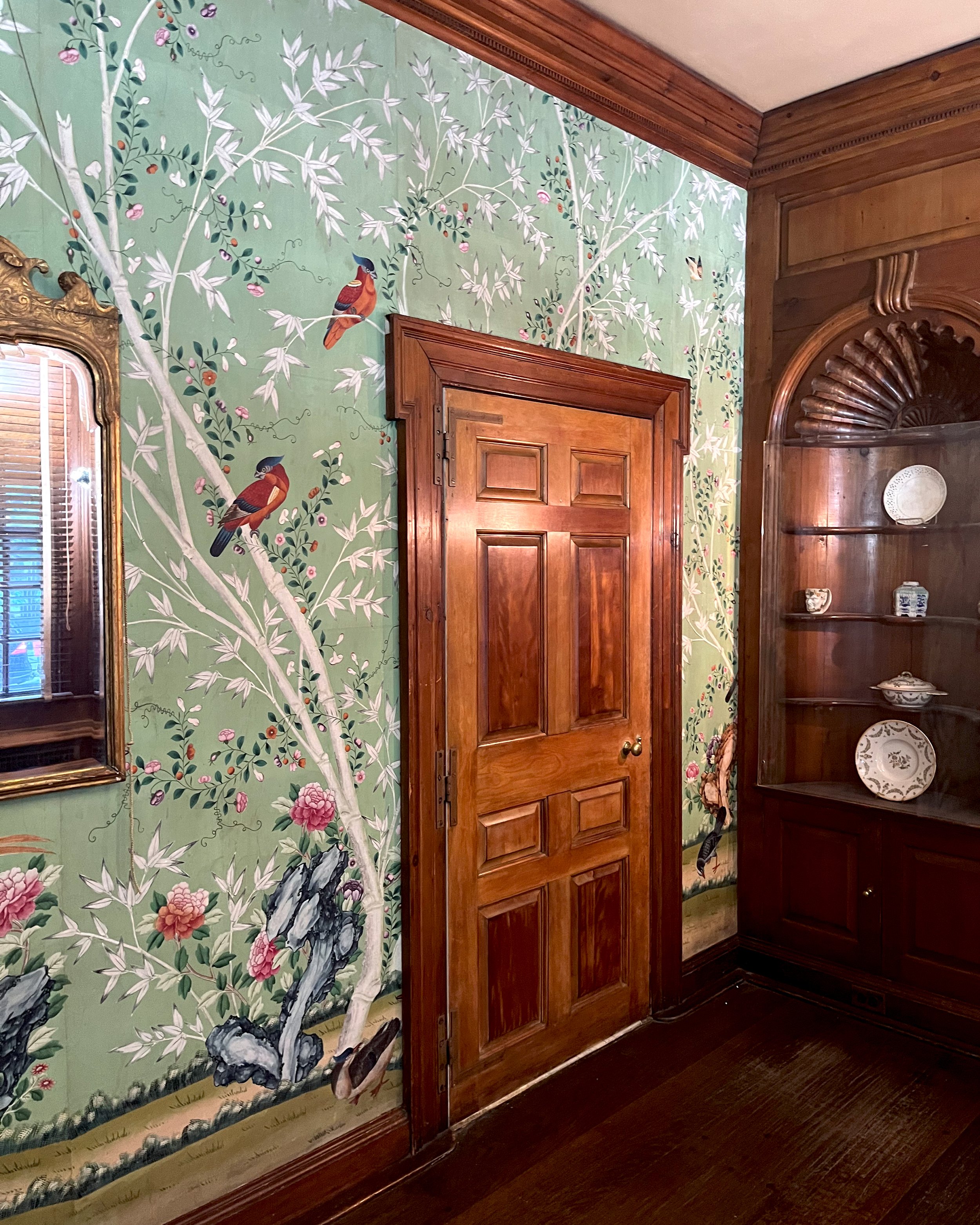Antique Chinese wallpaper, After Restoration, at The National Society of Colonial Dames in the State of New York headquaters
This rare antique Chinese wallpaper hangs in the drawing room at the headquarters of The National Society of Colonial Dames in the State of New York, on East 71st Street in Manhattan’s Upper East Side. The mid-18th century wallpaper had been carefully removed from its original location in Yorkshire, England. Sources differ on whether it came from a house or a castle.
Photo from Arts and Decoration magazine, May 1931
The National Society of the Colonial Dames of America (NSCDA) was founded in Philadelphia in 1891 by a group of women dedicated to promoting America's colonial heritage through historic preservation, patriotic service, and education.
The organization quickly expanded, and by 1893, the New York Society had become one of the early members of this federation of state societies.
The NSCDA is a lineage-based organization whose members must prove direct descent from a significant figure in the history of the country prior to July 5, 1776.
At the end of the 19th century, the United States experienced a surge of national pride and optimism fueled by the centennial celebrations of the Declaration of Independence and the inauguration of George Washington, as well as by the country’s rapid industrialization and growing status as a global power. This atmosphere of national enthusiasm gave rise to several patriotic organizations and social clubs including the Sons of the American Revolution, the Daughters of the American Revolution, the Colonial Dames of America, and the National Society of the Colonial Dames of America.
Photographed by Samuel H. Gottscho on June 2, 1931, Museum of the City of New York
In 1929, the New York Society commissioned a new building on East 71st Street to serve as their headquarters and house museum. The red-brick Georgian Revival-style building was designed by Richard Henry Dana, Jr., a specialist in colonial architecture. Dana designed the headquarters as an idealized reproduction of an 18th-century mansion, based on the 1750 home of Colonel John McEver which once stood at 34 Wall Street. The building officially opened on November 21, 1930, providing the growing organization with a fitting headquarters that embodied its mission of preserving and promoting America's colonial heritage.
The building today
The interior design incorporated a mix of meticulous reproductions and antiques salvaged from historic houses. The dining room came from a 1760 house in Ipswich, England. The 18th century marble mantel in the library was brought from England as well.
Photo from Arts and Decoration magazine, May 1931
Nancy McClelland, a renowned purveyor of antique Chinese wallpapers at the time, was likely involved in acquiring the mid-18th century wallpaper for the project.
The building and its interiors were photographed and featured in an issue of Arts and Decoration magazine in 1931, shortly after opening.
Arts and Decoration magazine, May 1931
Scenic Wallpaper was hired to clean and restore this beautiful 200+ year old antique wallpaper, which hadn’t been restored since its installation in 1930. We removed layers of dirt due to age and smoke and meticulously re-secured paper that was lifting or cracking.
During Cleaning
During Cleaning
During Cleaning
During Cleaning
In addition to small touch-ups throughout the room, we restored a panel with water damage that had leaked from floor to ceiling, stabilized and in-painted large areas of flaking paint, and blended seams above the doorways that had always been mismatched.
Before Restoration
After Restoration
Leak Before Restoration
Leak After Restoration
Leak Before Restoration
Leak After Restoration
Leak Before Restoration
Leak After Restoration
Leak Before Restoration
Leak After Restoration
Before Restoration
After Restoration
Before Restoration
After Restoration
Before Restoration
After Restoration
We also repainted a switch plate to match the wallpaper and patched and in-painted an area where a temperature gauge has previously been installed.
Before Restoration
After Restoration
Before Restoration
After Restoration
Before Restoration
After Restoration
Before Restoration
After Restoration
Before Restoration
After Restoration
Before Restoration
After Restoration
Before Restoration
After Restoration
Before Restoration
After Restoration
Before Restoration
After Restoration
Before Restoration
After Restoration
Before Restoration
After Restoration
Before Restoration
After Restoration
Before Restoration
After Restoration
Before Restoration
After Restoration
Before Restoration
After Restoration
Before Restoration
After Restoration
Before Restoration
After Restoration
Before Restoration
After Restoration
Before Restoration
After Restoration
Before Restoration
After Restoration
Before Restoration
After Restoration
Before Restoration
After Restoration
Before Restoration
After Restoration
The room is significantly brighter after the cleaning and restoration!
After Restoration
After Restoration
After Restoration
After Restoration
After Restoration
After Restoration
After Restoration
After Restoration
After Restoration
After Restoration
After Restoration
After Restoration
After Restoration
See more of our Antique Wallpaper restorations here.






















































































